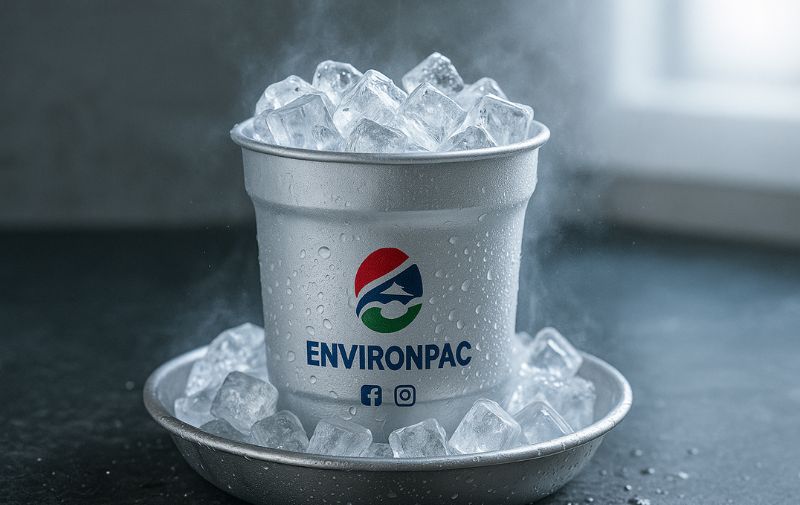Table of Contents
When it comes to choosing the right lids for aluminum cups, the decision can significantly impact both user experience and environmental footprint. Primarily, silicone and plastic (PP, or polypropylene) lids are the frontrunners in this space. But which one should you choose for your aluminum cups?
Opt for silicone lids if you prioritize long-lasting, eco-friendly solutions that withstand varied temperatures. On the other hand, choose plastic lids for a more cost-effective, lightweight option, particularly suitable for large-scale distribution or single-use scenarios.
In this post, we’ll explore the nuances of silicone and plastic lids, aiming to assist you in making an informed choice that aligns with your brand’s values and your customers’ needs.
Why Consider Silicone Lids for Your Aluminum Cups?
Silicone lids have surged in popularity due to their unique combination of durability, flexibility, and environmental friendliness. When paired with aluminum cups, they offer a sustainable and long-lasting option that appeals to both businesses and consumers.
Durability and Longevity
Silicone’s resilience is one of its most notable attributes. Unlike other materials that might crack, warp, or degrade over time, silicone maintains its integrity. This durability means that when you invest in silicone lids, you’re opting for a product that can withstand repeated use, whether in a cafe setting or for personal use. Additionally, silicone’s resistance to both high and low temperatures adds to its versatility, making it suitable for a wide range of beverages.
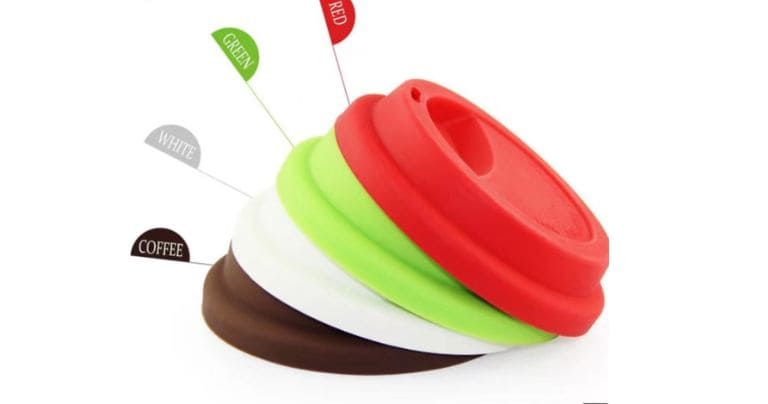
Eco-Friendly and Safe
In our increasingly eco-conscious world, the sustainability of products is a major concern for many consumers. Silicone lids stand out as an environmentally responsible choice. They are typically made from sand-derived silicon and are free from BPA, phthalates, and other harmful chemicals often found in plastics. Furthermore, their long lifespan means less waste is produced, and when it’s time to dispose of them, silicone can be recycled, though the process is more specialized than for common recyclables.
A Range of Design Options
Silicone’s malleability allows for a wealth of design possibilities. Whether you’re looking for a simple, streamlined lid or something more elaborate with built-in features like spill-proof closures, silicone can be molded to meet these needs. This flexibility in design also means that silicone lids can often provide a more secure fit, reducing the risk of leaks and spills – a crucial factor for on-the-go drinkware.
User Experience and Brand Perception
The tactile experience of silicone is another factor to consider. Soft to the touch and non-slip, it offers a premium feel that can elevate the perceived value of your aluminum cups. This aspect can play a significant role in brand perception, associating your products with quality and care.
Cost Considerations
While silicone lids can be more expensive than plastic alternatives, their longevity can offer better value over time. This aspect is crucial for businesses considering the overall return on investment. In settings where durability and repeated use are key, such as in cafes or corporate environments, the initial higher cost of silicone can be offset by its extended lifespan.
Environmental Impact
It’s also important to note the broader environmental impact. With consumers becoming more environmentally conscious, choosing silicone can be a statement about your brand’s commitment to sustainability. This can not only attract a certain demographic of eco-aware customers but also aligns with broader global shifts towards more sustainable business practices.
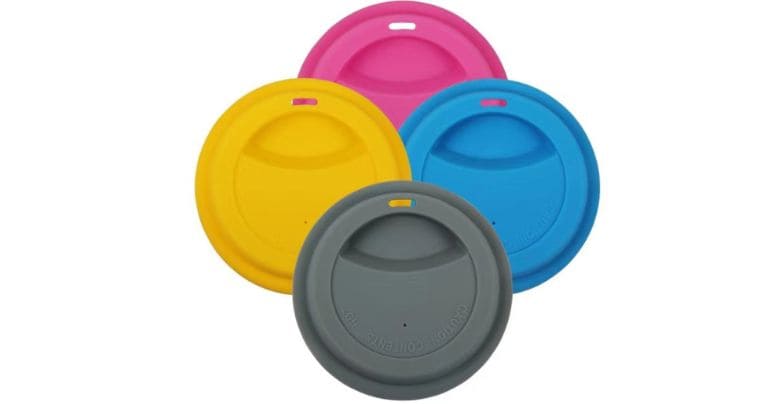
What Makes Plastic (PP) Lids a Viable Option?
Plastic lids, particularly those made from polypropylene (PP), remain a popular choice for aluminum cups, offering a blend of practicality, affordability, and versatility that can be suited to a variety of needs.
Affordability and Accessibility
One of the most significant advantages of PP lids is their cost-effectiveness. For businesses, especially those needing large quantities for events or mass distribution, PP lids present a budget-friendly solution. Their lower cost also makes them an accessible option for small businesses or startups looking to minimize expenses.
Lightweight and Functional
PP lids are valued for their light weight, which makes them easy to transport and handle – a vital consideration for event planners or businesses that require large quantities of cups and lids. This lightweight nature doesn’t come at the expense of functionality. PP lids can be engineered with various practical features, such as sip holes, snap closures, or even integrated straw holders, making them highly functional for different beverage types.
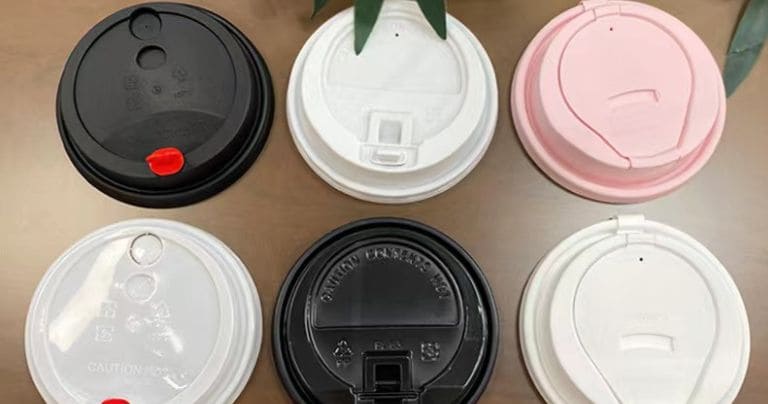
Recyclability and Environmental Considerations
While the environmental impact of plastic is a concern, PP is one of the more recyclable plastics. This means that, under the right circumstances, PP lids can be recycled, reducing their environmental footprint. However, it’s important to note that recycling rates for plastics are generally lower than for other materials, and the success of recycling depends on local recycling facilities and consumer practices.
Versatility in Design and Customization
The versatility of PP allows for a wide range of design options. Whether you need a simple flat lid or a more complex design with unique branding elements, PP can accommodate these needs. This flexibility extends to customization, as PP lids can be produced in various colors or even branded with your logo, enhancing brand visibility.
Considerations for User Experience
In terms of user experience, PP lids are generally reliable and easy to use. They fit securely on cups, providing a good seal to prevent spills. However, they may lack the premium feel of silicone, which could be a factor depending on your target market or brand positioning.
Durability and Longevity
While PP lids are strong and can withstand regular use, they may not offer the same level of longevity as silicone. Over time, they can become prone to cracking, especially when exposed to extreme temperatures or rough handling. This potential for reduced lifespan should be considered in the context of your specific use case and customer expectations.
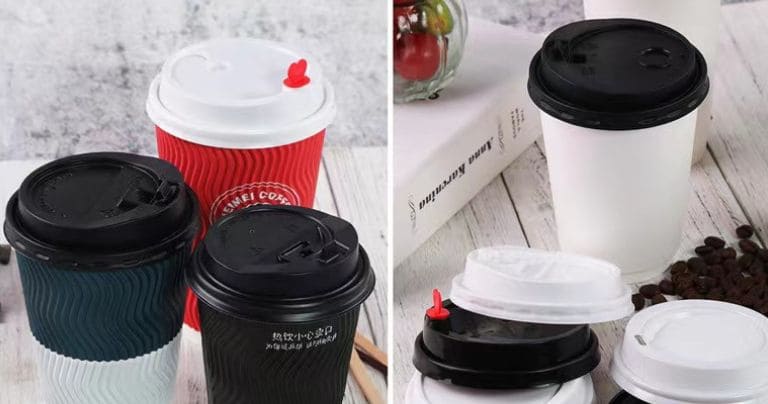
How to Choose Between Silicone and Plastic Lids?
Deciding between silicone and plastic (PP) lids for your aluminum cups involves considering several factors, including your brand values, target market, and intended use of the cups.
Aligning with Brand Values
First, consider what your brand stands for. If environmental sustainability and quality are central to your brand’s ethos, silicone lids might be the more suitable choice. Their durability and eco-friendliness can reflect positively on your brand and appeal to environmentally conscious consumers. On the other hand, if your brand is more focused on affordability and practicality, especially for large-scale events or promotions, PP lids could be the better option.
Understanding Your Target Market
Knowing your audience is crucial in this decision-making process. For instance, if your aluminum cups are primarily aimed at premium markets or settings where a high-quality feel is important, silicone lids would likely be more appealing due to their tactile qualities and durability. Conversely, for fast-paced environments like festivals or large corporate events where cost and ease of use are paramount, PP lids might be more appropriate.

Evaluating Use Cases
Consider the intended use of the cups. Silicone lids are generally more versatile, suitable for a range of temperatures, and offer a better seal, making them ideal for reusable cups intended for daily use or in settings where spill prevention is critical. PP lids, while also versatile, may be more suited to single-use scenarios or where large quantities of disposable lids are required.
Balancing Cost with Quality
Budget is a significant factor in any procurement decision. While silicone lids may offer a higher quality feel and longer lifespan, they also come with a higher price tag. In contrast, PP lids are more affordable and thus may be more suitable for budget-conscious projects or when purchasing in large volumes.
Environmental Impact and Sustainability
Finally, consider the environmental impact of your choice. If your brand is committed to sustainability, the longer lifespan and recyclability of silicone might be more in line with your goals. However, if the lids are likely to be disposed of after a single use, the recyclability of PP could make it a more viable option, provided there is access to appropriate recycling facilities.
In conclusion, the choice between silicone and plastic lids for your aluminum cups depends on a mix of factors including.

Conclusion
Whether you choose silicone or plastic lids for your aluminum cups, each option has its unique strengths. Silicone offers durability and an eco-friendly profile, while plastic is cost-effective and highly functional. Your choice should reflect your brand’s values, budget considerations, and your audience’s preferences, ensuring that your aluminum cups serve their purpose effectively and align with your branding goals.


